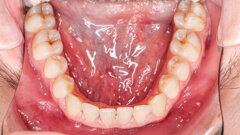In this fourth part, we will move on to the final topic: the human element of cybersecurity. If you remember only one thing from this whole series, let it be this: people are key. Your team—internal and external—is your greatest asset and your greatest risk when it comes to cybersecurity. You can spend tens of thousands of dollars on software, backups and security tools, but it only takes one person to accidentally click on a link, reuse a weak password or be tricked by a scam for everything to come crashing down. Despite all the technology, it is people who open the doors to cybercriminals, and it is people who need to be trained and empowered to keep those doors shut.
AI makes phishing smarter—and more difficult to identify
Phishing scams are still the number one way that cybercriminals break into businesses of all sizes, including dental practices. These attacks often look like legitimate messages from vendors, patients or even other team members. They may contain links or attachments that, once clicked, install malicious software or steal log-in credentials. In many cases, these phishing messages lead directly to ransomware attacks that lock the practice’s data and demand payment.
As we discussed previously, dental practices are good targets for cybercriminals because they know that they lack IT resources and cybersecurity skills. Now, artificial intelligence (AI) has also made it possible for attackers to launch massive phishing campaigns that are personalised and convincing. These crafted phishing messages are not the old scam emails full of typos and red flags. Today’s phishing emails are almost indistinguishable from genuine communications. Some even use your branding, your logo and your typical language style. We are now seeing this expand into text messages and phone calls too. Cybercriminals can harvest your social media, website and other public information to create messages that sound just like they came from a real person your team knows. If someone on your team is distracted, tired or simply unaware of these tactics, he or she could fall for this messaging.
Cybersecurity is not just a technology problem
Most of the incidents I see are not caused by a failure of the technology itself. Firewalls, antivirus software and backups usually do their jobs—but none of that matters if someone opens the front door to the attacker. That is what phishing and social engineering do. They trick people into opening the door.
That means that practices must stop thinking about cybersecurity as just an IT problem. It is not. It is a business problem, a human problem, and it needs to be treated as such. Every member of the dental team, including the front desk staff, clinical staff and leadership, plays a role in keeping the practice secure.
The training gap in dental practices
In many practices, cybersecurity is never talked about unless something goes wrong. There are no formal training sessions, no team discussions, and no policies or procedures on what to do if a suspicious message is received. Most people do not know what a phishing email looks like or how to report one, and fewer still understand the steps to take if they think that they have clicked on something suspicious.



 Austria / Österreich
Austria / Österreich
 Bosnia and Herzegovina / Босна и Херцеговина
Bosnia and Herzegovina / Босна и Херцеговина
 Bulgaria / България
Bulgaria / България
 Croatia / Hrvatska
Croatia / Hrvatska
 Czech Republic & Slovakia / Česká republika & Slovensko
Czech Republic & Slovakia / Česká republika & Slovensko
 France / France
France / France
 Germany / Deutschland
Germany / Deutschland
 Greece / ΕΛΛΑΔΑ
Greece / ΕΛΛΑΔΑ
 Hungary / Hungary
Hungary / Hungary
 Italy / Italia
Italy / Italia
 Netherlands / Nederland
Netherlands / Nederland
 Nordic / Nordic
Nordic / Nordic
 Poland / Polska
Poland / Polska
 Portugal / Portugal
Portugal / Portugal
 Romania & Moldova / România & Moldova
Romania & Moldova / România & Moldova
 Slovenia / Slovenija
Slovenia / Slovenija
 Serbia & Montenegro / Србија и Црна Гора
Serbia & Montenegro / Србија и Црна Гора
 Spain / España
Spain / España
 Switzerland / Schweiz
Switzerland / Schweiz
 Turkey / Türkiye
Turkey / Türkiye
 UK & Ireland / UK & Ireland
UK & Ireland / UK & Ireland
 Brazil / Brasil
Brazil / Brasil
 Canada / Canada
Canada / Canada
 Latin America / Latinoamérica
Latin America / Latinoamérica
 USA / USA
USA / USA
 China / 中国
China / 中国
 India / भारत गणराज्य
India / भारत गणराज्य
 Pakistan / Pākistān
Pakistan / Pākistān
 Vietnam / Việt Nam
Vietnam / Việt Nam
 ASEAN / ASEAN
ASEAN / ASEAN
 Israel / מְדִינַת יִשְׂרָאֵל
Israel / מְדִינַת יִשְׂרָאֵל
 Algeria, Morocco & Tunisia / الجزائر والمغرب وتونس
Algeria, Morocco & Tunisia / الجزائر والمغرب وتونس
 Middle East / Middle East
Middle East / Middle East











































To post a reply please login or register